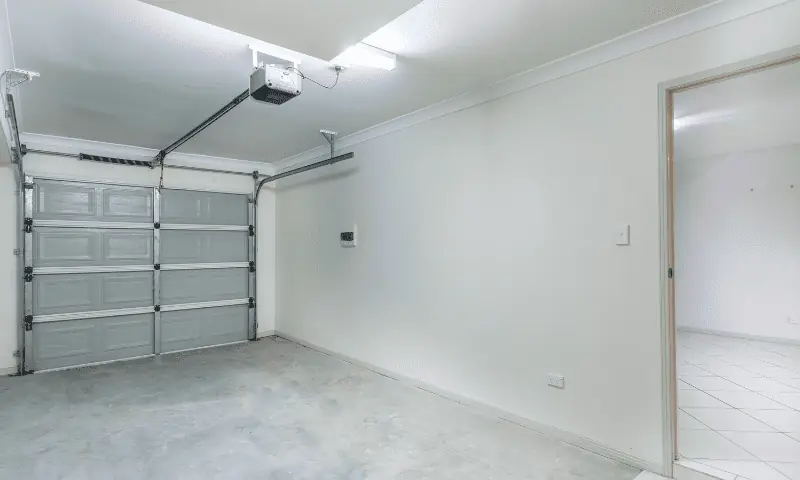When it comes to home improvement, even the smallest details can make a big difference. Homeowners often find themselves facing the dilemma of difference between spackle vs putty when it comes for how to repair small holes in drywall. 🏠🛠️ These two materials may seem similar at first glance, but they have distinct characteristics that can significantly impact the outcome of your repair job.
Spackle vs Putty: Which is Best for Small Drywall Repairs?
Are you tired of staring at unsightly holes, dents, or cracks in your walls? Don’t let these imperfections diminish the beauty of your living space any longer. Whether you’re a DIY enthusiast or a professional contractor, understanding the nuances between spackle and putty is crucial for achieving a flawless finish.
This blog post will discuss how to drywall repair, exploring the advantages and applications of both spackle and putty. By the end, you’ll be familiar with the knowledge to make an informed decision and transform your walls into smooth, blemish-free surfaces.
Let’s embark on this journey to discover which material reigns supreme for small drywall repairs. We’ll start by understanding the fundamental differences between spackle and putty, then assess your specific repair needs.
From there, we’ll explore the advantages of each option, discuss application techniques, and consider crucial factors that will influence your choice. Get ready to become an expert of small dry wall repairs! 🎨✨
Understanding Spackle vs Putty
What is spackle?
Spackle is a lightweight, quick-drying compound specifically designed for drywall repairs. It’s ideal for:
- Filling small holes and cracks
- Smoothing wall surfaces
- Patching nail holes
What is putty?
Putty is a denser, more versatile filler used for various surfaces. Its characteristics include:
- Greater durability
- Slower drying time
- Suitable for both interior and exterior use
Key differences between spackle and putty
Spackle and putty differ in:
- Consistency
- Drying time
- Application methods
- Sanding requirements
Common uses for each
Spackle is typically used for:
- Small drywall repairs
- Quick touch-ups
Putty is preferred for:
- Larger holes and gaps
- Wood surface repairs
- Exterior applications
Assessing Your Drywall Repair Needs
Types of small drywall damages
Small drywall damages typically include:
- Nail holes
- Dents from door knobs
- Shallow cracks
- Minor scratches
Determining the size and depth of the repair
Accurate measurement is crucial for selecting the appropriate repair method. Consider the following:
- Width of the damage
- Depth of the hole or dent
- Surrounding area condition
Considering the surface finish
The existing wall texture influences repair material choice:
- Smooth walls may require a finer product
- Textured surfaces need a compatible filler
- Paint finish affects the final appearance
How to repair small holes in drywall
Preparing the Surface
Before beginning the repair process, it’s crucial to prepare the damaged area properly. Start by cleaning the surface around the hole, removing any loose debris or paint chips. Use a utility knife to carefully cut away any frayed or loose drywall paper, creating a clean edge around the hole.
Filling the Hole
For small holes up to 1/4 inch in diameter:
- Apply a thin layer of spackling compound directly over the hole using a putty knife.
- Smooth the compound, feathering the edges to blend with the surrounding wall.
- Allow the compound to dry completely (usually 1-2 hours).
- Sand the area lightly with fine-grit sandpaper to achieve a smooth finish.
For holes between 1/4 inch and 1 inch:
- Apply a self-adhesive mesh patch over the hole.
- Spread a layer of joint compound over the patch, extending beyond its edges.
- Allow the compound to dry, then apply a second thin coat if necessary.
- Sand the area smooth once fully dry.
Finishing Touches
After the repair has dried and been sanded:
- Wipe the area clean with a damp cloth to remove dust.
- Prime the repaired spot to ensure even paint absorption.
- Paint the area to match the surrounding wall, feathering the edges for a seamless blend.
By following these steps, you can effectively repair small holes in drywall, restoring your walls to their original condition. With practice, this DIY task becomes quick and straightforward, saving both time and money on professional repairs.
Advantages of Using Spackle
Quick drying time
Spackle offers rapid drying, typically within 1-2 hours, enabling swift project completion. Its quick-set formula allows for:
- Faster painting
- Reduced wait times
- Efficient multi-layer applications
This advantage makes spackle ideal for time-sensitive drywall repairs, particularly when addressing small holes or cracks.
Easy to sand and paint over
Benefits of Choosing Putty
Flexibility and durability
Putty offers superior flexibility and durability for drywall repairs. Its malleable nature allows for:
- Easy application in various hole sizes
- Better adaptation to surface movements
- Enhanced longevity of repairs
These qualities make putty an excellent choice for long-lasting drywall fixes, especially in areas prone to settling or temperature fluctuations.
Application Techniques
Tools needed for each material for effective drywall repairs, specific tools are essential:
Spackle:
- Putty knife
- Sandpaper
- Spackle compound
Putty:
- Putty knife
- Sandpaper
- Wood filler or wall putty
Both materials require similar tools, but the compound or filler used differs based on the chosen repair method.
- Proper preparation of the repair area
- Step-by-step application process
- Drying and curing times
Factors to Consider When Choosing
Project size and complexity
When selecting between spackle and putty for drywall repairs, consider:
- Project size: Spackle for small holes, putty for larger areas
- Complexity: Spackle for simple repairs, putty for intricate work
- Surface type: Spackle for smooth surfaces, putty for textured walls
- Drying time: Spackle dries faster, putty takes longer but offers better results
- Choose based on your specific repair needs and desired outcome.
Choosing between spackle and putty for small drywall repairs ultimately depends on the specific requirements of the project. Both materials offer unique advantages, with spackle being ideal for quick fixes and smaller holes, while putty excels in durability and flexibility for larger repairs. Consider factors such as the size of the repair, drying time, and the desired finish when making a decision.
For optimal results, assess the extent of the damage and select the appropriate material accordingly. Proper application techniques are crucial for achieving a seamless finish. Whether opting for spackle or putty, ensuring the surface is properly prepared and following manufacturer guidelines will lead to successful drywall repairs and a professional-looking result.
People also ask:
Small Garage Conversion Ideas to Add Living Space to Your Home








